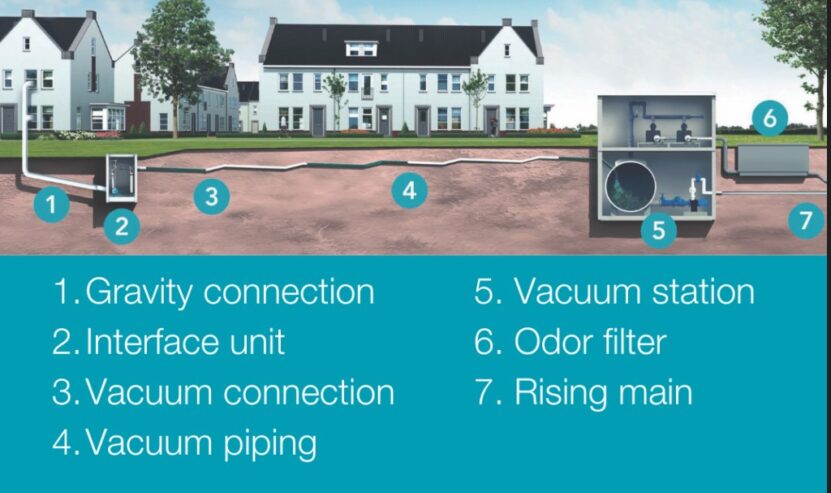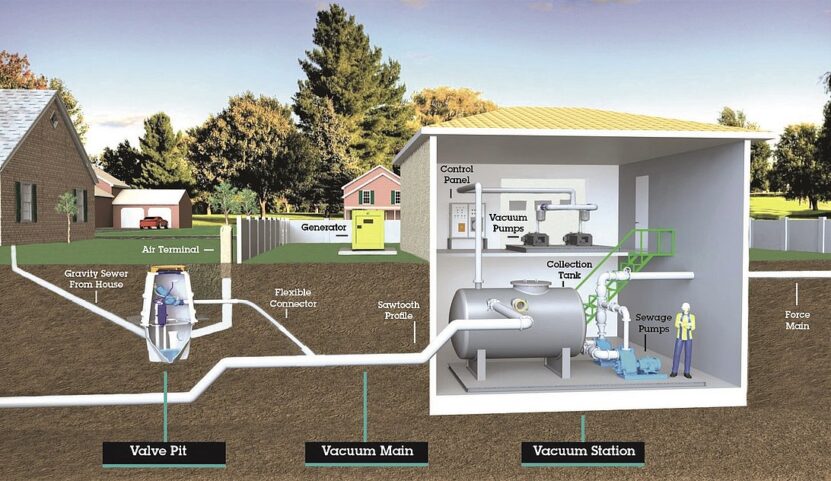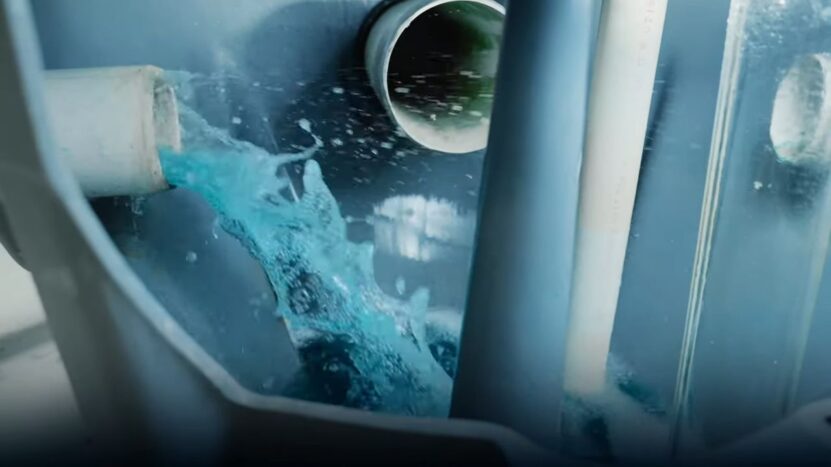In a world where sustainability and environmental friendliness are becoming increasingly important, it is crucial to find innovative solutions for our infrastructure challenges. One such innovation is the vacuum sewer system. This article will dissect the concept of vacuum sewer systems and discuss their benefits, as well as their impact on communities and the environment.
What is Vacuum Sewerage?

Vacuum sewerage is a wastewater management system that uses negative pressure to transport wastewater through pipes. Unlike traditional gravity sewerage, where water flows downward due to gravity, vacuum sewerage sucks wastewater through a network of pipes. This system is particularly useful in areas where traditional sewerage is difficult or costly to install.
The History of Vacuum Sewerage
The origins of vacuum sewerage date back to the 1960s, when engineers were looking for more efficient ways to manage wastewater in areas with complex topographies. The first commercial vacuum sewerage system was installed in Sweden, and since then, the technology has spread worldwide. Ongoing innovations have led to more reliable and cost-effective systems.
Benefits of Vacuum Sewerage
Environmental Friendliness
One of the biggest advantages of vacuum sewerage is its environmental friendliness. Because the system uses less water to transport waste, it contributes to water conservation. Additionally, the pipes are often smaller and can be installed more flexibly, resulting in less excavation and disruption to the landscape.
Efficiency
Vacuum sewerage systems are highly efficient in transporting wastewater over long distances and through difficult terrain. This makes them ideal for use in urban areas with limited space or in communities with low infrastructure.
Health and Hygiene
The closed nature of vacuum sewerage systems reduces the risk of leaks and groundwater contamination. This contributes to better public health and hygiene, especially in densely populated areas.
Technological Innovations

In recent years, technological innovations have further improved the efficiency and reliability of vacuum sewerage systems. Sensors and automation technologies are now integrated to enable real-time monitoring and maintenance. This helps in early detection of problems and reduces the likelihood of system failure.
Case Study: Successful Implementation in Communities
An example of a successful implementation of vacuum sewerage can be found in a small coastal community in the Netherlands. Traditional sewerage was unsuitable due to the high groundwater level and proximity to the sea. By switching to a vacuum sewerage system, the community was able to not only reduce costs but also improve water quality and minimize environmental impact.
Maintenance and Sustainability
The maintenance of vacuum sewerage systems is relatively simple and cost-effective. Regular inspections and the use of advanced monitoring technologies ensure that any issues are quickly identified and resolved. This contributes to the sustainability and long lifespan of the system.
Cost Comparison with Traditional Sewerage Systems
Vacuum sewer systems can be more cost-effective than traditional gravity-based sewer systems, especially in areas where digging deep trenches is expensive. Gravity sewerage requires large pipes and significant excavation, which can lead to higher installation costs. Vacuum sewerage uses smaller pipes and shallower trenches, reducing material and labor costs.
Maintenance costs are also lower for vacuum sewerage. Gravity systems rely on continuous slopes, which can cause blockages and require frequent cleaning. Vacuum systems use suction to transport wastewater, reducing blockages and minimizing maintenance. Fewer leaks mean lower repair costs and less environmental damage.
Energy use is a key factor in cost comparison. Gravity sewer systems rely on natural slopes, reducing energy consumption but requiring extensive infrastructure. Vacuum sewerage needs pumps to create suction, leading to some energy use. However, the overall cost of operation is often lower due to reduced repair and replacement expenses.
Many communities choose vacuum sewerage because of long-term savings. The combination of lower installation costs, minimal maintenance, and efficient wastewater transport makes vacuum systems a smart investment.
Adaptability in Extreme Climates
These systems work well in various climates, including extreme conditions. In freezing temperatures, traditional sewer systems require pipes to be buried deep to prevent freezing. Vacuum sewerage operates with shallow pipes, making installation easier and more cost-effective in cold regions. The movement of air and wastewater within the system reduces the risk of freezing.
In areas with heavy rainfall, traditional sewerage can become overwhelmed by excess water entering the system. This leads to sewer overflows and contamination. Vacuum sewerage is a closed system, preventing stormwater infiltration and reducing the risk of overflows.
Hot and dry regions also benefit from this system. Traditional sewer systems may experience cracks and leaks due to soil movement caused by extreme heat. Vacuum sewerage uses flexible pipes that adapt to soil shifts, preventing leaks and maintaining efficiency.
Integration with Smart City Infrastructure

Vacuum sewerage can be integrated with modern technology to improve efficiency and maintenance. Sensors installed in the system monitor pressure levels, detect leaks, and identify blockages. This allows for real-time maintenance, reducing repair costs and preventing major failures.
Smart city infrastructure relies on data to improve urban services. Vacuum sewerage systems can be linked to city-wide monitoring networks, providing valuable data on water use and system performance. This helps cities plan maintenance schedules and allocate resources efficiently.
Automation plays a key role in smart sewer systems. Remote monitoring allows operators to adjust pressure levels and respond quickly to issues. Automated alerts notify maintenance teams of potential problems before they become serious.
Vacuum sewerage fits well into modern cities aiming to improve sustainability and efficiency. The combination of advanced monitoring, automation, and data collection makes it a valuable part of smart infrastructure.
Impact on Rural and Remote Areas
Many rural and remote areas struggle with wastewater management due to high installation costs and challenging terrain. Traditional sewer systems require extensive excavation and large pipes, making them impractical in isolated locations. Vacuum sewerage provides a more flexible and affordable alternative.
Vacuum systems use small pipes that can be installed in shallow trenches. This reduces the need for extensive excavation, lowering costs and minimizing environmental impact. The system can transport wastewater over long distances, making it ideal for rural communities spread across large areas.
Remote areas often lack access to centralized wastewater treatment plants. Vacuum sewerage can be designed to collect and transport waste to treatment facilities located far from the community. This ensures proper sanitation without requiring each household to have an individual system.
Many rural communities have adopted vacuum sewerage as a practical solution to wastewater challenges. The system’s ability to operate efficiently in remote locations makes it a valuable alternative to traditional sewerage.
Last Words
With the increasing focus on sustainability and environmental friendliness, the demand for these systems is expected to continue growing. Innovations such as the integration of renewable energy sources and smart technologies will further improve the efficiency and environmental friendliness of these systems.
